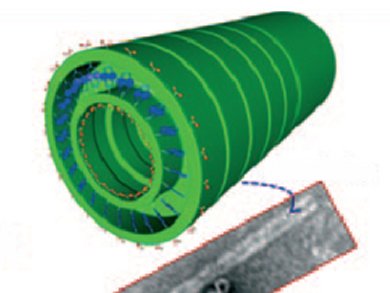A collaborative research team from The Ohio State University and The University of Akron has reported the synthesis of the “bolaamphiphile” building blocks and the microscopic and spectroscopic characterization of the resulting one-dimensional n-type nanotubes.
Jon Parquette and co-workers have carried out the double substitution of naphthalene tetracarboxylic diimide with the headgroup of L-lysine, and the self-assembly of the resulting “bolaamphiphile” product to form π-conjugated nanotubes in water (see picture). NMR spectra of the macromolecular aggregates demonstrate the exceptional conformational homogeneity of the constituent molecules that make up the nanotubes. These nanotubes are stable and potentially promising for practical application such as components of light-harvesting devices.

- Amphiphilic Self-Assembly of an n-Type Nanotube
H. Shao, J. Seifert, N. C. Romano, M. Gao, J. J. Helmus, C. P. Jaroniec, D. A. Modarelli, J. R. Parquette,
Angew. Chem. Int. Ed. 2010, 49.
DOI: 10.1002/anie.201003415 - H. Shao, J. Seifert, N. C. Romano, M. Gao, J. J. Helmus, C. P. Jaroniec, D. A. Modarelli, J. R. Parquette,
Angew. Chem. 2010, 122.
DOI: 10.1002/ange.201003415




